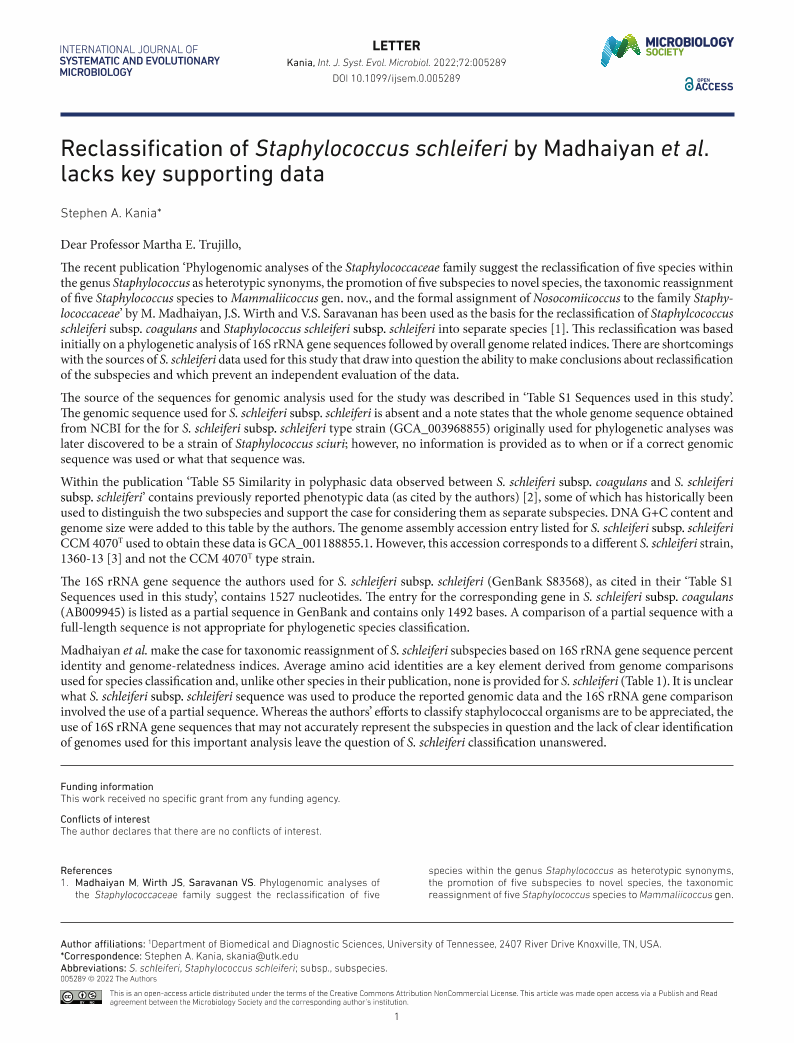
Full text loading...


Reclassification of Staphylococcus schleiferi by Madhaiyan et al. lacks key supporting data, Page 1 of 1
< Previous page | Next page > /docserver/preview/fulltext/ijsem/72/4/ijsem005289-1.gif
There is no abstract available.

Article metrics loading...

Full text loading...
References

